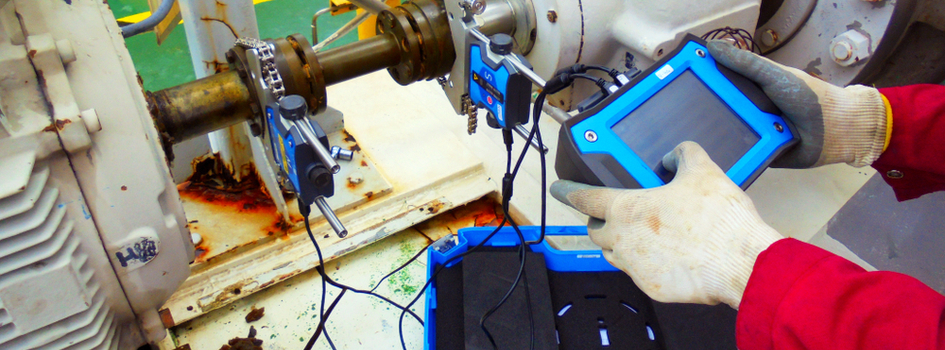How to Read Power in From Manufacturer Pump Curve

How to Read a Pump Bend for Centrifugal Pumps
Reading pump performance curves is an essential skill when sizing pumps for efficient and reliable operation in various applications. It is also useful when troubleshooting or verifying that the pump performance matches desired application requirements. In addition to exploring their other benefits, this commodity seeks to augment your understanding of centrifugal pump curves.
Understanding Centrifugal Pump Curves
A centrifugal pump curve gives a articulate picture of the pump's performance regarding its pressure head and flow rate. It is a plot of the pump curve head vs flow. Various factors are considered when selecting a pump for a new application. One of the virtually critical factors is its Best Efficiency Point (BEP). This is the betoken on the curve, at any given impeller diameter, where the pump efficiency is at its highest value and where axial and radial loading is minimized to the greatest extent. While it would be great to exist able to size pumps to operate at BEP in all cases, this is not practical based on awarding conditions. Operating pumps too far away from this point may cause premature failure. Some common challenges this can crusade are:
- Excessive vibration
- Cavitation
- Premature clothing and tear of the pump parts
- Waste of money and time
Reading pump curves can be a confusing and intimidating job for beginners, as different pump types have corresponding unlike types of curves. However, this article borders on how to read pump curves for centrifugal pumps.
What is a Centrifugal Pump?
A centrifugal pump is a force per unit area-producing device that produces the pressure required to transport liquids from one indicate to some other for various industrial and market applications. It converts velocity free energy to force per unit area, and the resultant flow is dependent on characteristics of the organisation. Centrifugal pumps are used in a wide range of industrial applications, including:
- Food processing
- Power generation
- Oil and gas manufacture
- Pulp and newspaper product
- Mining industry

The Elements of a Pump Curve
Getting acquainted with the key elements will help you lot empathize how to read a pump bend better. They include:
- Title Box
- Menses
- Head
- Efficiency
- Impeller Trim
- Horsepower
- NPSHR
- Minimum Flow
Title Box
If you need to discover out information on the pump's model, size, speed, and other unique specifications, you can refer to the championship box. This element is useful in matching an existing pump to its operation data.
Flow
Before yous can select an appropriate pump for a specific application, you must know the flow required. Flow is indicated on the horizontal centrality of the pump performance bend and is commonly measured in gallons per minute (GPM).
Head
This part of the curve shows the total developed head (TDH) the pump must generate at any given flow based again on the specific application requirements. Caput is normally expressed in feet (FT), and information technology is located on the vertical axis, and its intersection with the required menses on the horizontal axis represents the pump's operation betoken.
Efficiency
Efficiency is a very of import factor to consider in selecting a pump. Being a ratio of the energy delivered by the pump to that supplied to the pump, it is clearly indicated on the performance curve for any flow and head, or the operating point. Highly efficient pumps require less free energy to operate. An efficiency range of threescore-80% is typical, but lower efficiencies are also typical when operating far to the left of BEP.
Impeller Trim
Since the maximum impeller bore is typically likewise high to meet the desired operating signal, impellers can exist trimmed to meet this pattern point. All pumps have an acceptable range of impeller diameters, expressed in inches, ranging from the maximum impeller diameter to a minimum impeller diameter. These diameters are typically shown in one-inch increments on the performance curve. Many times, the required impeller diameter is adamant by interpolating between ii impeller diameter curves.
Horsepower
Yous can besides read the respective required horsepower (HP) for the given flow and head since these HP lines are clearly shown on the performance curve. Actual required HP is besides calculated per the following formula: GPM X TDH X S.G. divided by 3960 X Efficiency (expressed as a decimal).
NPSHR
Cyberspace Positive Suction Head Required for centrifugal pumps (NPSHR) more often than not ways the minimum amount of positive absolute pressure needed at the pump suction to keep the fluid in a liquid state and avoid cavitation. In that location are NPSHR curves clearly identifiable on every pump performance curve, and since NPSHR is a pressure, information technology is represented in feet (FT). Every pump arrangement has a sure positive pressure available to it, known as cyberspace positive suction head bachelor (NPSHA). NPSHA must always exist a greater value than NPSHR for a pump to operate normally and reliably.
Minimum Flow
This is typically represented by a thick vertical line on the pump performance bend. It specifies the everyman corporeality of continuous flow required to allow the pump to dissipate rut efficiently (thus minimizing flashing or cavitation) and also operate with acceptable radial and axial loads.
The Importance of Reading Pump Curves
The ability to read pump curves is beneficial in the following ways:
- Aiding the choice of pumps that meet functioning specifications for new applications.
- Helping to troubleshoot existing pumps
- Giving engineers and operators the power to evaluate the pump conditions and solve operation problems
- Ensuring optimal operation
- Preventing pump cavitation
Contact DXP For Centrifugal Pumps Today
At DXP, we are committed to providing globe-grade centrifugal pumps of all types and classes to arrange your business needs. We represent competent suppliers that can supply you with several alternatives for you to choose from. If yous are looking to access effective and efficient centrifugal pumps, DXP is the correct choice.
Contact us online today to learn more than well-nigh our specialty pumps, positive deportation pumps, and more.
Source: https://www.dxpe.com/how-to-read-a-pump-curve-for-centrifugal-pumps/
0 Response to "How to Read Power in From Manufacturer Pump Curve"
Enregistrer un commentaire